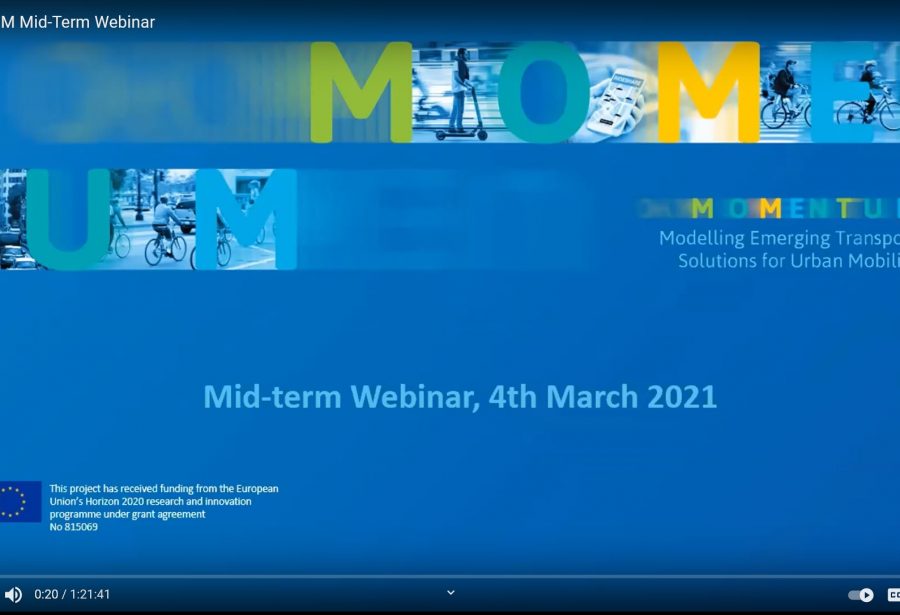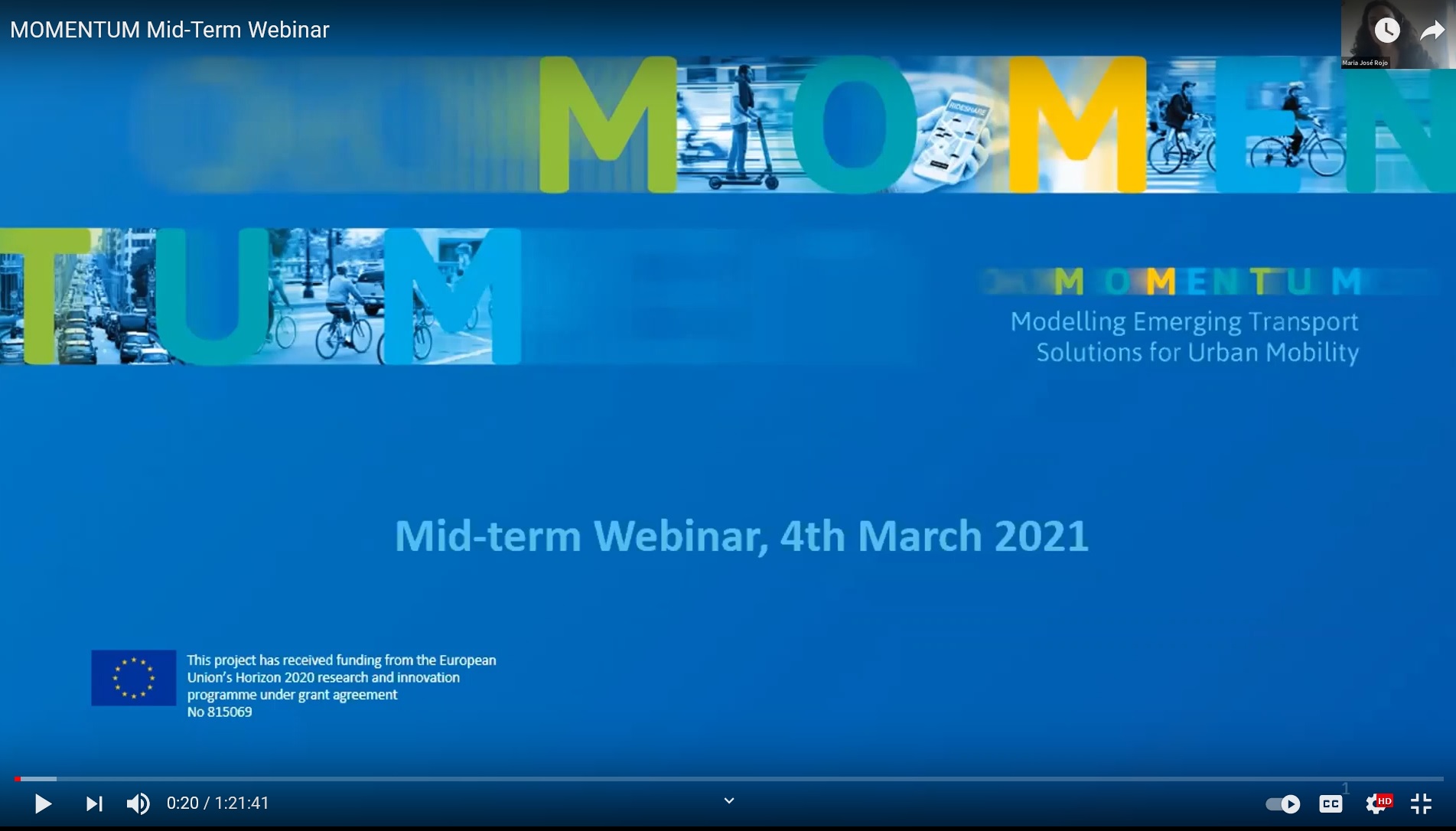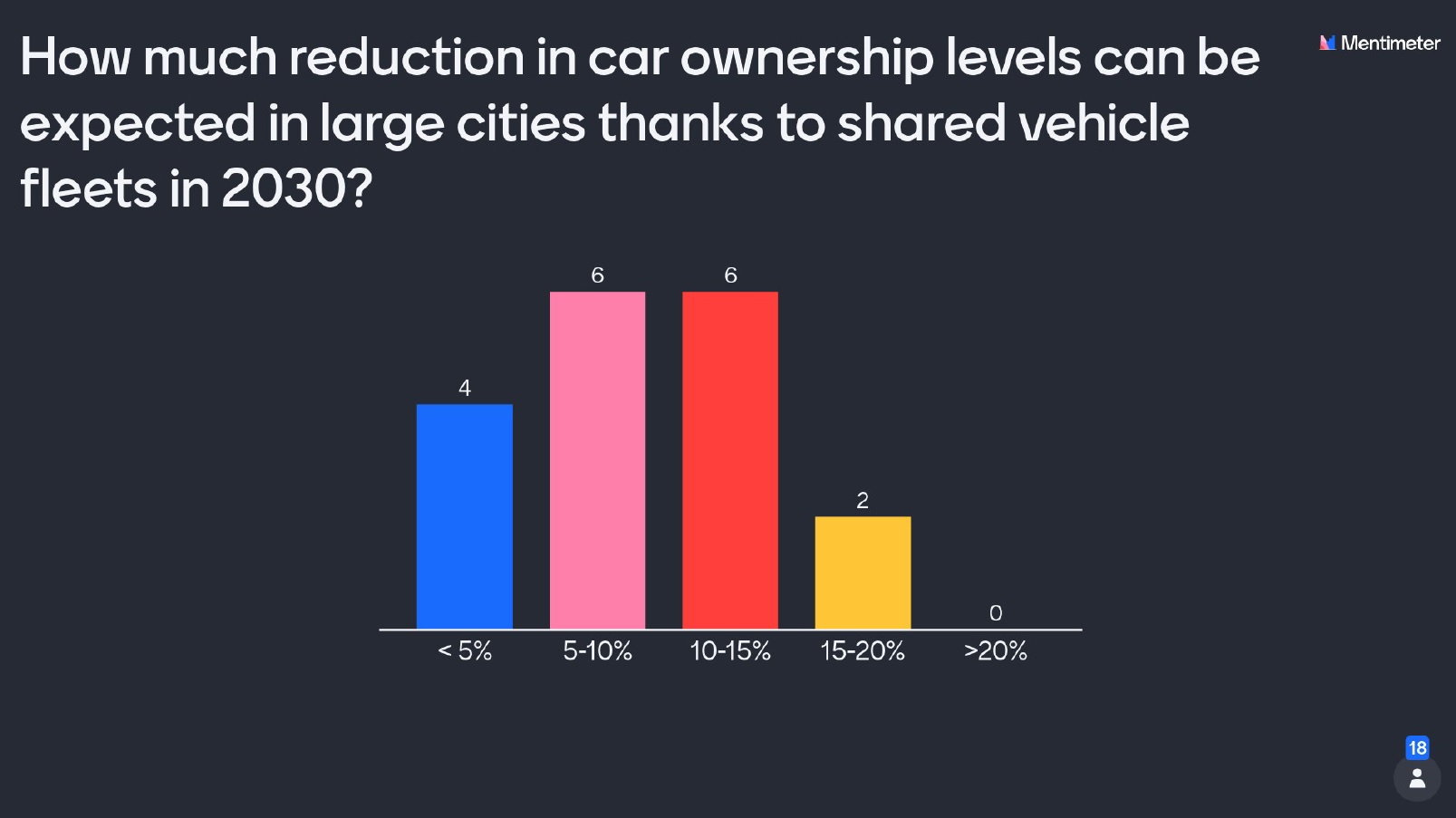
Tools, surveys & project updates: an interim conclusion
The MOMENTUM project had reached its half-way mark and ‘celebrated’ the occasion with a Mid-Term Webinar as an opportunity to engage with European stakeholders and share first results. The 90-minute-long event, which took place on 4 March and was attended by around 40 stakeholders, provided the opportunity for the MOMENTUM experts to receive feedback.
This exchange took place in an interactive fashion through the online tools of Miro and Mentimeter. The results gathered during the meeting helps the experts to consider their next steps and provides an understanding of the opinions from the wider community of experts. You can find the recording of the entire online seminar here or by clicking on the picture below. The presentations are linked at the end of this article for further research.
After a brief introduction, which highlighted the MOMENTUM project and its progress, each work package leader had the chance to present their work in detail. Javier Burrieza Galán from the Spanish partner ‘Nommon’ elaborated on his expert survey about automated vehicles. The aim of the survey was a detailed overview of the experts’ opinion concerning the deployment of automated vehicles within four different scenarios. These included, inter alia, a very technological environment versus a stagnant city. Overall, expectations concerning the penetration rate of this emerging mobility were rather low. In a second step, similar questions were also restated to the audience, who supported the experts’ opinion.
In comparison to several rather academic analyses of work packages, a practical topic was presented by Josep Maria Salanova Grau from CERTH/HIT. The Greek research institute developed a decision support tool, which identifies urban mobility interventions and their potential costs of implementation. In a second step, the tool proposes mobility actions by using mobility data. Furthermore, the tool can calculate the use of bike- or ride-sharing solutions, based on parameters that are entered by the user. These parameters range from the demand for shared solution, to operating costs and average speed of operation in the area. You can use the decision support tool here. Other presentations were shown by Sergio Fernández Balaguer (EMT Madrid), Santhanakrishnan Narayanan (TU Munich) and Antonio D. Masegosa (Deusto).
You can access all presentations by clicking the links below:
- Introduction, Structure and Project Description – Sergio Fernández Balaguer (EMT Madrid)
- Emerging mobility solutions: challenges for urban transport planning – Javier Burrieza Galán (NOMMON)
- Methodologies and Algorithms for Mobility Data Analysis – Antonio D. Masegosa (Deusto)
- Modelling of emerging mobility solutions – Santhanakrishnan Narayanan (TU Munich)
- Decision Support Tool – Josep Maria Salanova Grau (CERTH/HIT)




